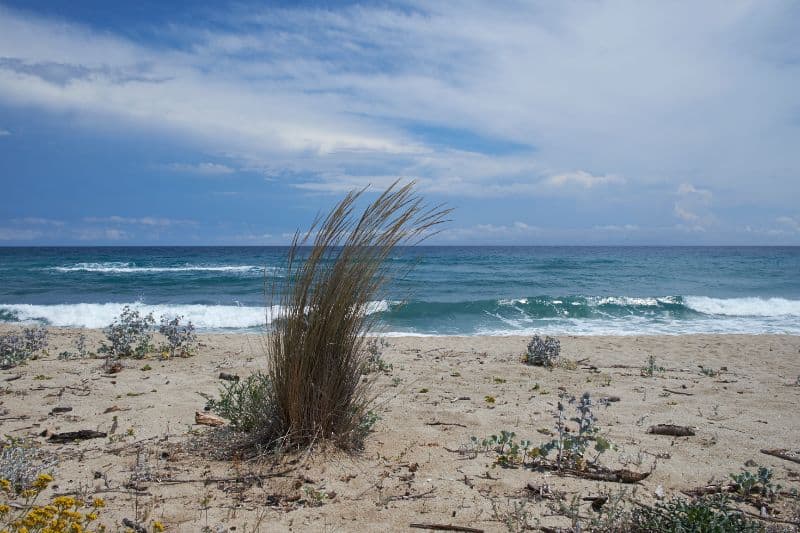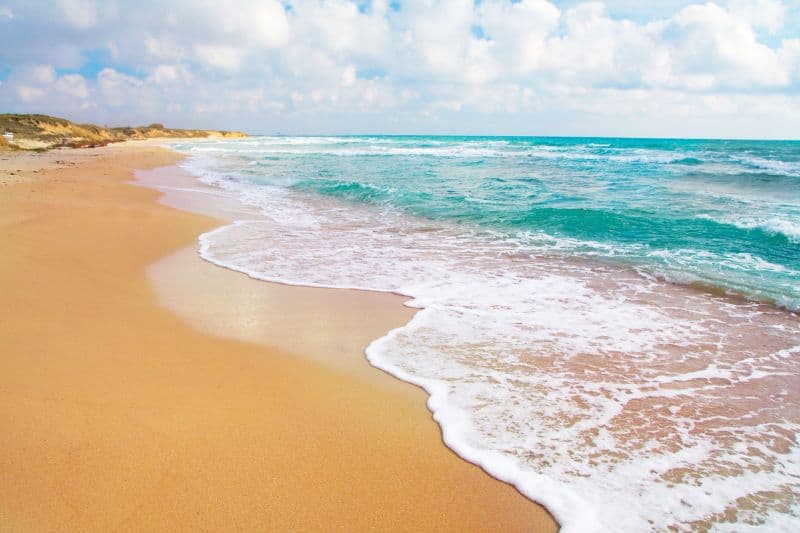Ocean acidification is the process whereby ocean waters increase in acid concentration, and the pH level falls beyond normal or neutral.
Again, ocean acidification can be explained as a situation where the level of carbon IV oxide in the water increases drastically. This may be influenced by some human activities, such as the burning of fossil fuels that cause harm to the atmosphere.
Ocean water has some level of pH and is mostly rated on the higher side of the neutral pH on the pH scale. When that pH falls below the neutral point on the pH scale, that’s when we say acidification has occurred. .
According to NOAA,
“Ocean acidification refers to a reduction in the pH of the ocean over an extended period of time, caused primarily by uptake of carbon dioxide (CO2) from the atmosphere.“
Causes of Ocean Acidification
Some of the common causes of ocean acidification include the following:
1. Raised Carbon IV oxide Concentration in the Ocean
When the level of carbon dioxide gas gets higher in the ocean, it obviously affects the whole water. When sea organisms die on the sea beds, their remains pile up and form corals, which consist of carbons.
Also, these organisms release calcium into the water. These compounds have a far-reaching detrimental impact on the composition of the water as they add acidity.

2. Raised Carbon IV oxide Concentration in the Atmosphere
Sometimes, the harm induced in the atmosphere can spread into the waters. This is when carbon dioxide is released into the atmosphere through various human activities. This CO2, in turn, contaminates the water because the carbon gases get to be dissolved in the sea waters, lowering the water’s pH and contributing to acidification.
3. Higher Concentration of Hydrogen Ions in The Water
At the sea beds, there are some chemical reactions that may take place, and they can have negative impacts on the quality of the ocean water.
Such reactions may include the increase in hydrogen ions, which, when combined with other compounds such as nitrogen and water, among other gases, and their reactions lead to ocean water acidity.
4. Burning Fossil Fuels
This may not be directly linked to water contamination, but it plays a crucial role in changing the environment. When burnt, petroleum, diesel, and coal produce lots of carbon dioxide.
This increases the concentration of carbon gas in the atmosphere, which in turn finds a way into the water. That can be through acidic rainfalls or even direct dissolving into the water.
5. Waste Disposal
Disposal of waste has been a challenge to many countries. As for those that border seawater masses, they have been too quick to use the oceans as possible dumping grounds for domestic and industrial wastes.
Nonetheless, as the atmosphere shoulders the brunt of poisonous gases, seawaters are on the receiving end of dangerous liquid wastes. A case in point is industrial and agricultural wastes with acidic compounds. This waste is very dangerous as it lowers the PH of the ocean water.
6. Improper Land Management
Agriculture may also contribute to the problem of ocean acidity, especially when the methods employed by the farmers are not suitable.
These are methods that may be prone to soil erosion, and in the process, the chemicals are washed downstream into the ocean. In short, if the land is poorly managed, the water masses can be hit by the impact of acidifying soil mineral content and water pollution.
7. Industrialization
Countries or cities that have embraced industrialization pose dangerous implications for the environment. Their growing numbers can only mean that there is increased carbon dioxide concentration in the atmosphere, which increases acidity when absorbed into the water.
You see, industries contribute to the emission of dangerous gases such as carbon dioxide, sulfur dioxide, nitrogen oxides, and many others, which later form acid rain or dissolve in the oceans to create acidic conditions.
Effects of Ocean Acidification
There are several effects of ocean acidification that, as an environmentalist, you should know. Some of these include:
1. Increase in The Carbon Dioxide Concentration in The Ocean
Ocean acidification does not only change the PH of the ocean water. As a matter of fact, it changes the gaseous concentration in the ocean, particularly carbon dioxide. The carbon gas then reacts with water molecules, forming carbonic acid.
Even sad, when rain falls on water bodies, the concentration of carbon continues to increase instead of decreasing, as more carbon dioxide from the atmosphere is now brought on board to create additional carbonic acid. This can potentially lead to suffocation and even the death of marine creatures.

2. Loss of Aquatic Life
The seawater supports life at its normal conditions. Nevertheless, some organisms are affected when the PH level is lowered or raised. Classical examples of these organisms include fish, whales, sharks, and many more.
Increased acidity makes living cumbersome and almost impossible for some living things. This leads to the disappearance or death of some organisms in the aquatic ecological environment.
3. Food Shortage
Ocean acidification contributes to the problem of food shortage in many ways. When fish die, humans who depend on them for food and livelihood are hit by socio-economic problems.
4. Food Web Interference
Ocean acidification leads to the death and disappearance of some plants and animals in the sea. When some organisms become extinct, their dependents are also threatened because they have nothing to feed on.
5. Impact on Human Health
Humans depend on water for various purposes. When the ocean water acidity gets higher, the consumers or the users of such water are living in a perilous situation. Diseases such as cancers can easily be transmitted to humans when they consume fish intoxicated with higher sulfur concentrations.
6. Impact on The Reefs
As more carbon dioxide is absorbed into the oceans, it bonds to form carbonic acid. The acid then produces hydrogen ions and bicarbonate ions. Then, the hydrogen ions bond with free carbonate ions in the ocean to form other bicarbonate products.
The problem with this reaction is that marine organisms possessing shells (corals, crustaceans, molluscs, foraminifera, and coralline algae) need carbonate ions to make calcium carbonate shells and skeletons. Thus, the more dissolved carbon dioxide in the ocean, the less free carbonate ions are accessible for forming calcium carbonate shells/skeletons.
7. Impact on The Open Ocean Planktonic Ecosystems
It must be remembered that the planktonic ecosystems in the oceans are open. That is, they are not definite. It varies from place to place and also from ocean to ocean. In fact, it is the phytoplankton that forms the basis of the marine ecosystems.
The phytoplankton carries out photosynthesis and thus begins the chain of the marine ecosystems. So, if somehow, their photosynthesis faces a problem, the entire marine ecosystem suffers.
The fact is that the higher the CO2 levels, the more the problem faced by the plankton in carrying out their photosynthesis. Increased acidity of the seawater hampers various processes of the plankton like nitrogen fixation and others as well.

8. Coastal Ecosystems are Affected
Not just the marine ecosystems, but the coastal ecosystems are affected too by the acidification of the oceans. The coastal ecosystem contains a variety of plants that form a unique habitat.
With the acidification of the ocean, it is natural for the coastal areas to develop acidity in their soil. While a little bit of acidity might help in the better growth of the plants, too much of it can be detrimental to their health.
Once the habitat is affected, it is natural that the entire ecosystem will be affected, too. This entire chain causes a major imbalance in the ecological systems.
But that’s not all yet, as this acidification also decreases the productiveness of the organisms found in the coastal areas. Their death rates might also increase, leading to a particular species’ extinction.
9. High Latitude Oceans are at a Risk
The oceans located in the higher latitudes are the most productive ones. The Southern and the Arctic oceans are, in fact, the most productive of all the oceans. They are teeming with life and among the most exploited oceans as well.
As the problem of acidification increases, life in these oceans is also affected. Their productivity, as well as their lifespan, decreases, and that becomes an enormous problem.
Solutions to Ocean Acidification
Some of the solutions to ocean acidification include but are not limited to the following;
1. Strict and Relevant Regulations
Human actions are best guarded by the policies of the land. The first step towards the fight against ocean acidification is through the ratification of legislation ensuring that waste handling, among other pollution-risk activities, is controlled. Such regulations would spread to the fisheries department to ensure that safety is maintained in food consumption.

2. Civil Education
Governments and international organizations can develop some platforms to educate or sensitize the common citizens on the risks posed by climate change and ocean acidification. Such initiatives can instill some self-triggered discipline that guides the quest for environmental conservation.
Education would also be necessary because the tips given in the theoretical context will be not only pertinent in real context but also in the understanding of the policies.
3. Consuming Only the “Right fish”
In any case, increased acidity would make fish consumption a risky affair. This is why the authorities should ensure that only the less harmless fish find their way into the market. This can be very helpful in reducing the chances of food poisoning and carbon gas circulation in the environment.
4. Reducing the Consumption of Carbon-oriented Energy Sources
The presence of a high concentration of carbon in the atmosphere can be attributed to various human activities, which can be controlled to some extent. Carbon emitted from fossil fuels can be reduced by minimizing the use of such fuels.
Adopting the use of alternative/renewable energy sources can be the best available option. Diversification of energy sources, such as solar and wind as alternative energy sources, can significantly pay off.
When there is reduced carbon dioxide concentration in the atmosphere, there will be a resultant change in the ocean.
The other viable option that can be reliable is geothermal, which is environmentally friendly. Geothermal power can be such an initiative because it comes with less carbon dioxide emission in the atmosphere. This would reduce the chances of contaminating the ocean waters.
5. Use of Alternative Water Sources
Because of the need to ensure safety, skepticism may pay off. Such can be through alternative water sources such as using boreholes, wells, or tapped rainwater instead of ocean water domestically. This can help in minimizing possible ocean water pollution.
6. Eating Less Meat
This is not surprising at all. Raising livestock is a major source of greenhouse gases. It is these greenhouse gases that cause all the problems.
By reducing our meat consumption, we would reduce the demand for meat. This, in turn, would result in lesser rearing and raising of livestock. As a result, we would effectively reduce the amount of greenhouse gases released into the atmosphere.






